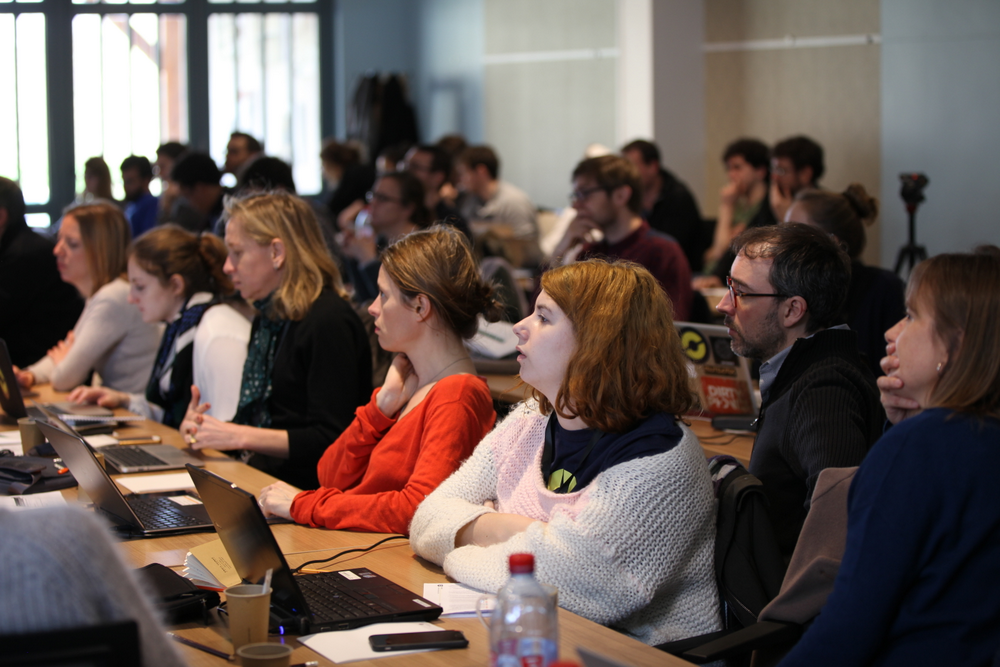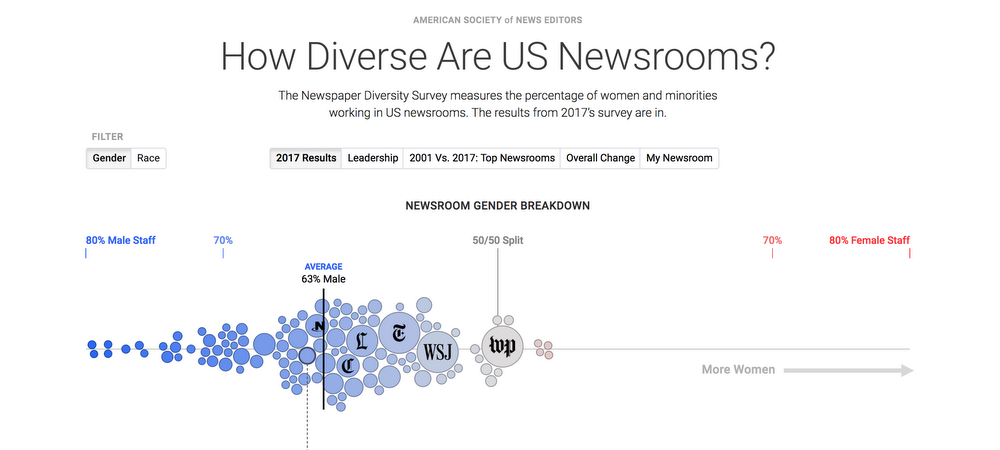In the news and technology communities, the collective sense of urgency about the future of journalism reached new heights this year. Never before has the press been so important—or so under threat. Technology and platforms like the ones Google has built present extraordinary opportunities to strengthen journalism, but they require newsrooms and tech companies working closely together to get it right. That’s why the Google News Lab exists.
In a Keyword series this week, we’ve shared the work the News Lab is doing around the world to address industry challenges and take advantage of new technologies. Today, in our final post in this series, we’re stepping back to give a holistic view of 10 major developments in our work this last year. We’re looking forward to an even bigger 2018 and would love your feedback on how we can partner with the industry to build a stronger future for news.
1. Combating misinformation in European elections
The spread of misinformation is a growing problem for open societies everywhere. So, helping news organizations confront that challenge—especially during elections—was a key focus for us. We helped the First Draft Coalition pioneer new collaborative reporting models to combat misinformation and verify news stories during the UK, French, and German elections.
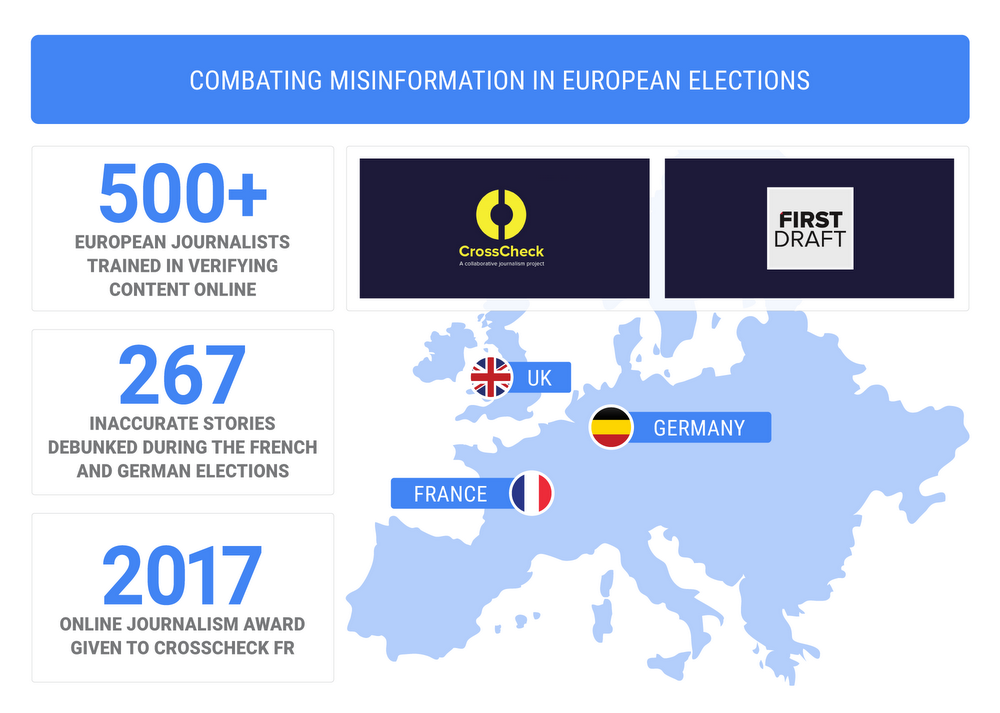
2. Helping users identify trustworthy news content on Google
We worked closely with the news industry to better highlight accurate, quality content on our platforms with new product features and partnerships. Along with the Trust Project, we produced eight indicators of trust that newsrooms can add to their content to help users distinguish between quality content and misinformation. We also partnered with the International Fact-Checking Network and The Poynter Institute to increase the number of verified fact checkers across the world.
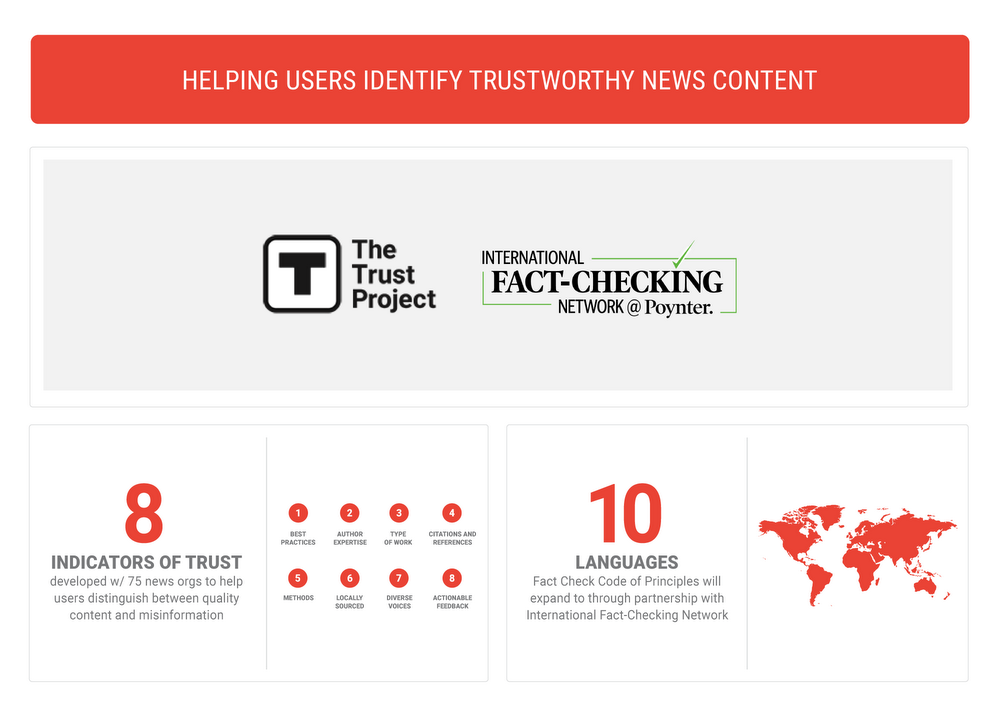
3. Empowering underrepresented voices
Bringing underrepresented voices into newsrooms can help uncover important stories that are left out of mainstream news coverage. We supported ASNE’s survey to get a better sense of diversity in newsrooms across the U.S. We also partnered with organizations in the U.S., Brazil, France and Germany to provide journalists from diverse backgrounds with in-depth programs to develop their careers.
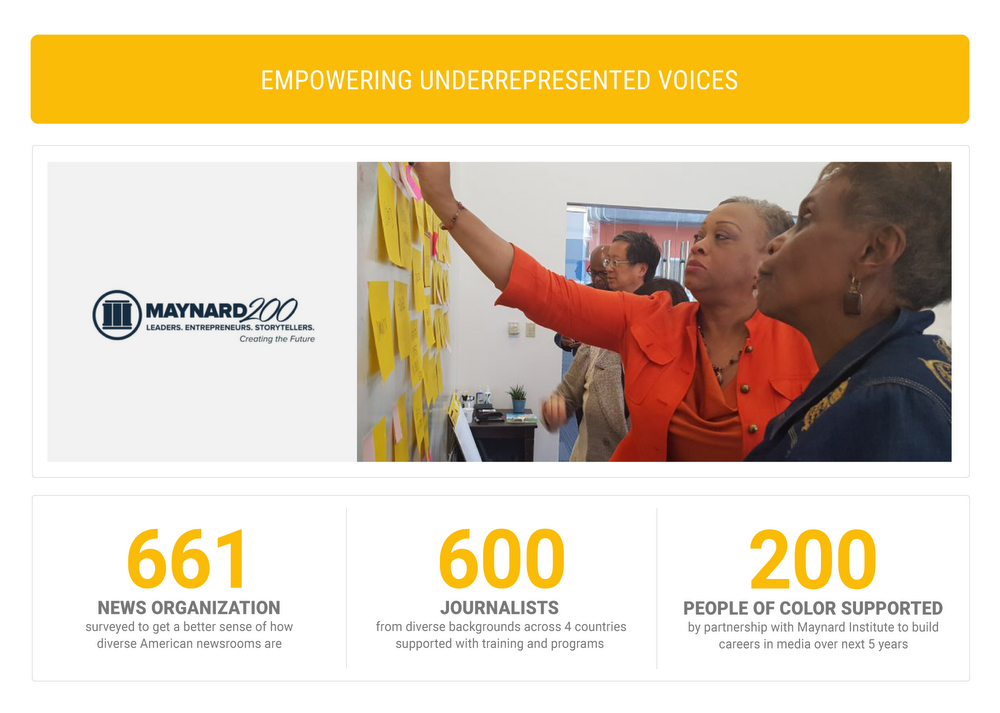
4. Strengthening local news
With revenue pressures challenging the creation of quality local news content, we began investing in projects to strengthen local newsrooms across the U.S. We partnered with the Society for Professional Journalists to train more than 9,000 local reporters in digital skills. We’re also supporting Report for America, an initiative that will use a Teach for America model to place a thousand journalists in local newsrooms over the next five years.
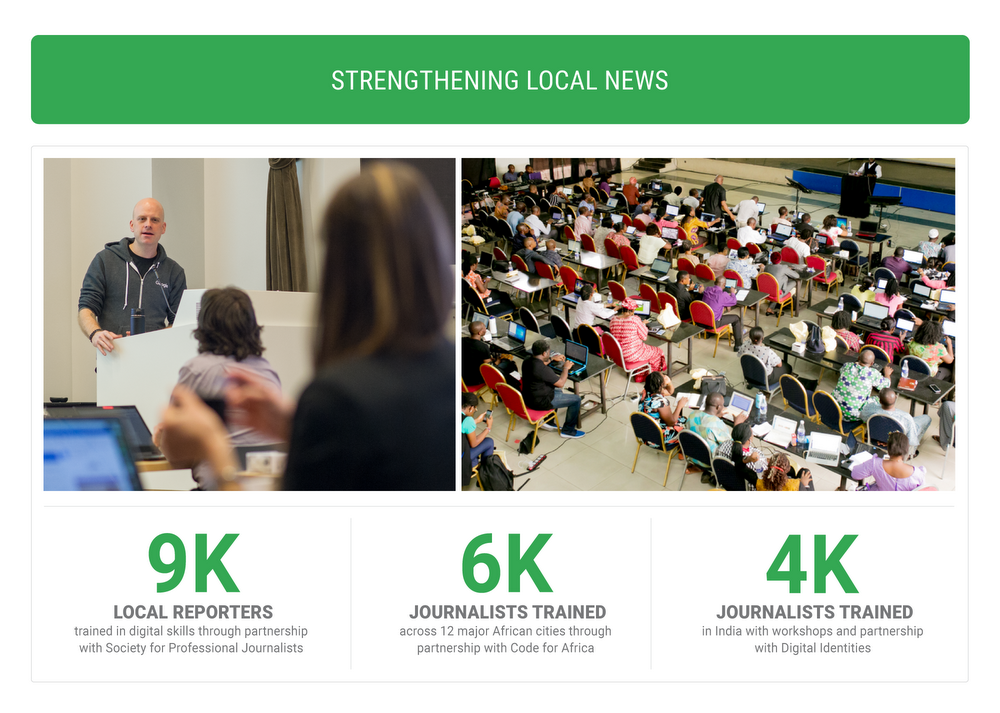
5. Researching key challenges in journalism
To better understand key challenges facing the news industry, we produced studies on the state of data journalism in 2017 and how audiences experience VR and what it means for journalists. We also supported the ICFJ’s newsroom study on the usage of technology in newsrooms.
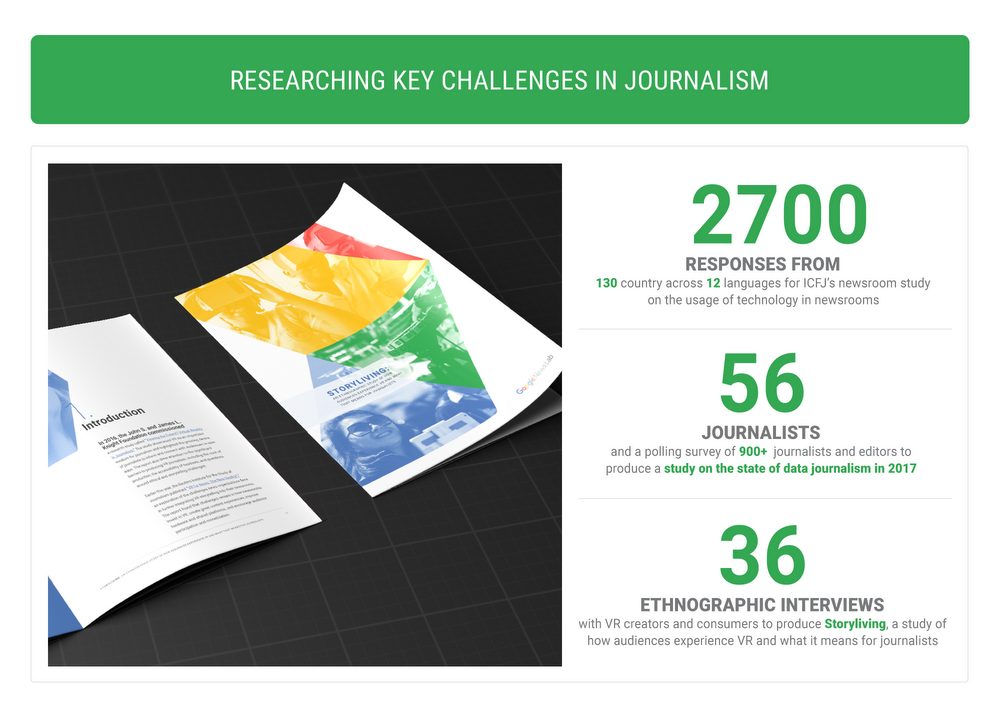
6. Working with newsrooms to experiment on new technology
From drones to virtual reality, we helped news organizations understand and use emerging technologies to shape their reporting and engage audiences in new ways. And we experimented with machine learning, too—we partnered with ProPublica to launch Documenting Hate, a project which uses AI to help build a national database for hate crime and bias incidents.
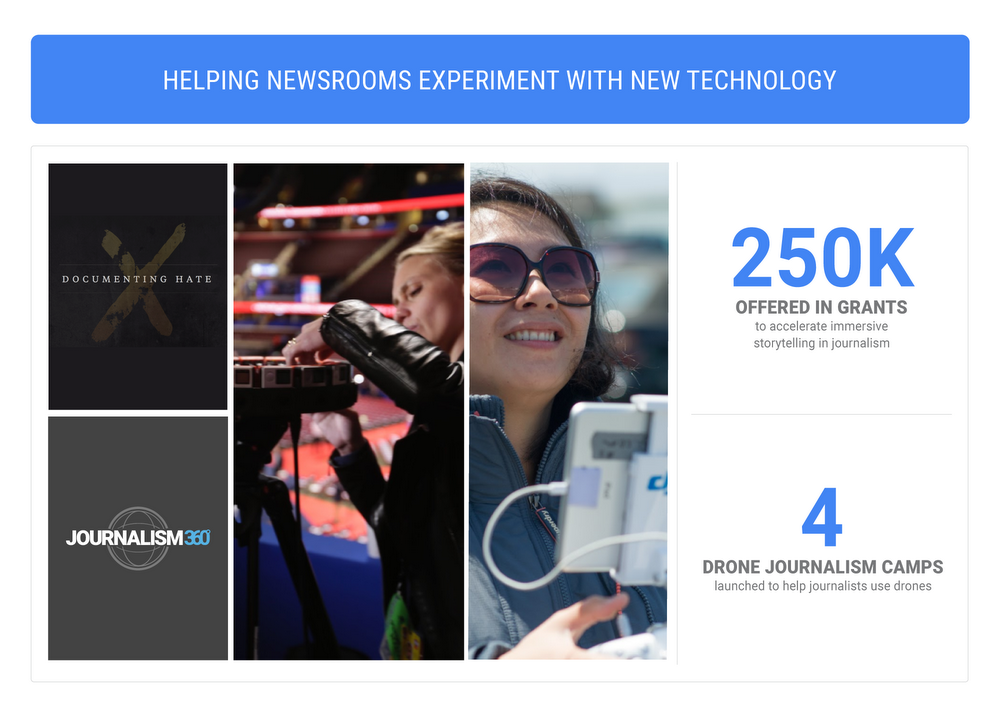
7. Building tools for data journalism
Our research into the state of data journalism found that while half of newsrooms have a dedicated data journalist, many lack the tools and resources to be successful. So we built a number of tools—Flourish, Tilegrams, Data Gif Maker, Election Databot— to make data journalism more accessible to newsrooms and journalists across the world.

8. Training journalists across the world in digital skills
With our online training center, advanced online learning partnerships, and in-person trainings, we helped train more than 500,000 journalists across the world in digital tools and skills for storytelling and reporting. To develop the next generation of digital journalists, we offered more than 50 News Lab Fellowships with major news organizations across 12 countries.
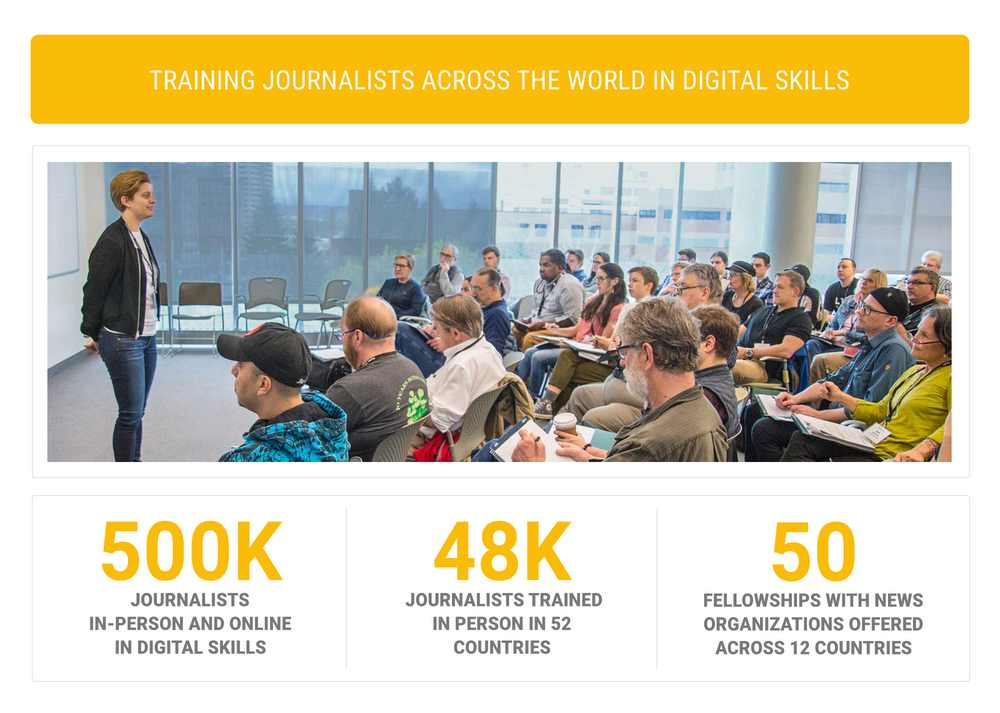
9. Helping newsrooms use Google Trends data to support elections coverage
Google Trends data offers news organizations a look at the candidates and issues that voters are interested in during election season. In Germany, we created a Google Trends Hub to show users’ search interest in key candidates and built a visualization tool to bring the data to life. In France, we launched a data driven web app that showed search interest in the candidates over time.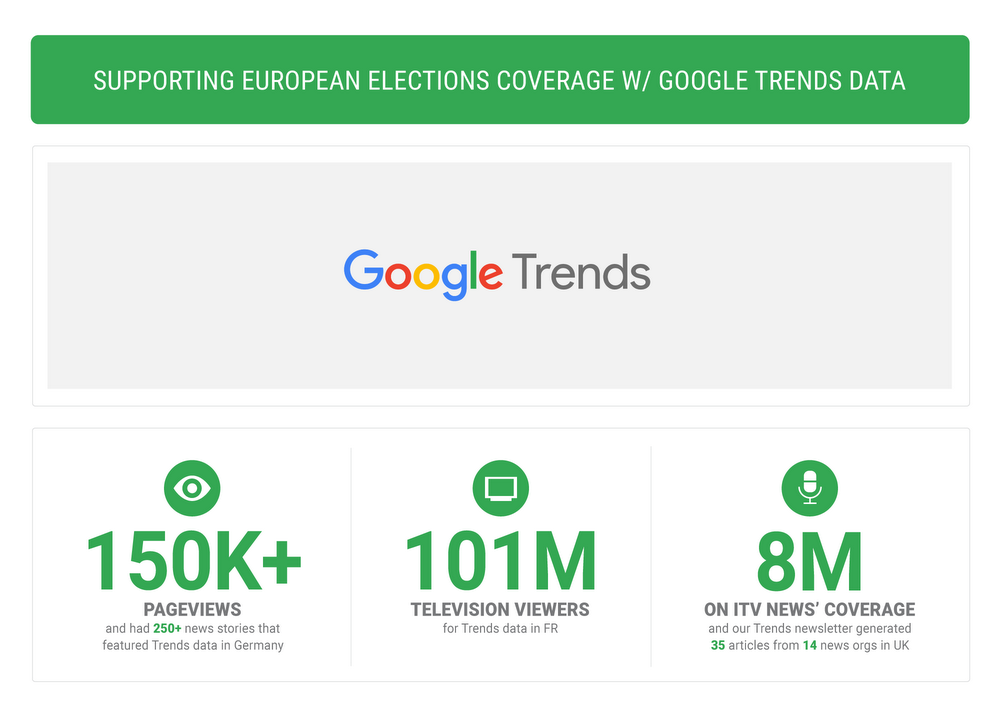
10. Expanding the News Lab to Brazil and Asia
This year we launched the News Lab in two new markets: Brazil and in Asia. To kick things off we held inaugural News Lab Summits in both regions—convening journalists from 15 states in Brazil and journalists from 15 countries in Singapore. Since then, we’ve trained more than 8,000 journalists in Brazil and 12,000 journalists in Asia.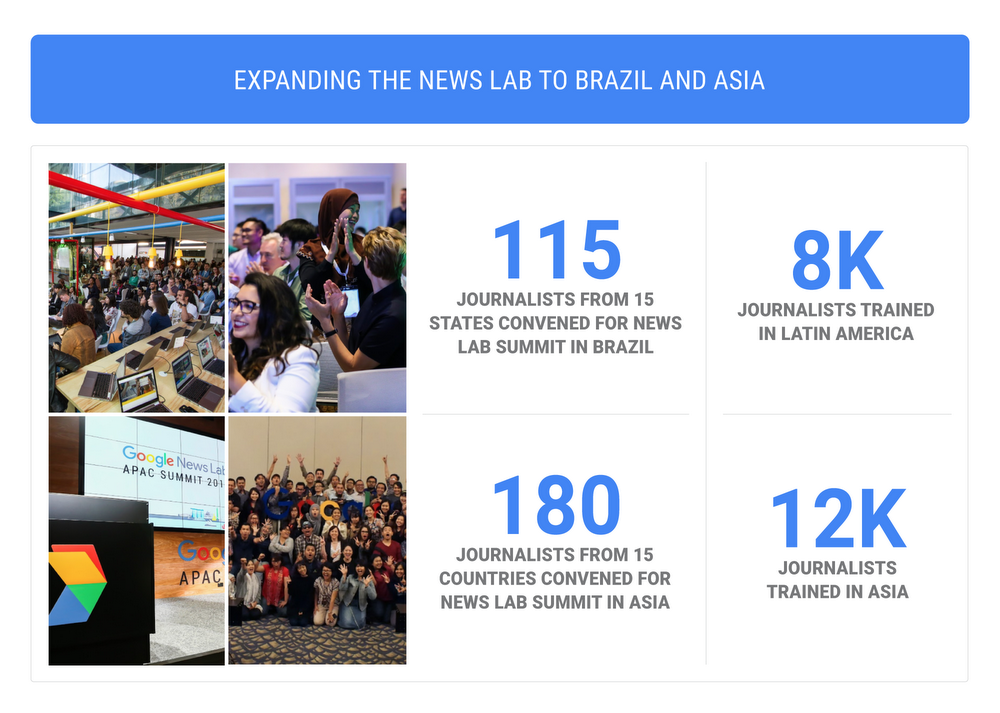
It’s an exciting time for journalism. There are many challenges, but we are eager to work with the news industry to build a more informed world. Tell us where you think we should put our efforts—we’d love to hear feedback and new ideas.

